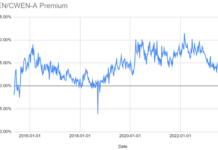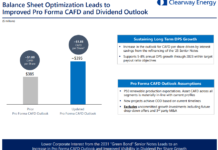by Sean Kidney

Renewable Energy Finance via BigStockPhoto
|
There has been a bit of interest recently about rapidly expanding options for retail investors to get involved in renewable energy projects. While we still see retail bonds as making a relatively modest contribution to the transition to a low carbon economy, they are important in engaging the public and creating awareness for green thematic investments which can only be good.
Here’s a round up of some of the activity going on in the retail bond market (please note, this is not an endorsement of and product’s credit characteristics, only their environmental ones)…
Good Energy bond 3x oversubscribed
Last month we blogged about UK-based Good Energy’s aim to raise £5m through a retail bond offering to finance investment in solar and wind energy generation. Within 3 weeks, Good Energy easily met their target, closing the book at £15m three weeks ahead of schedule!
The demand demonstrated for this bond and the earlier Ecotricity bonds is very encouraging. Question is, will this trend continue to the larger utilities? When the big utilities start issuing asset-linked climate bonds to finance their renewable energy assets, that’s when we’ll see real capital shifts.
Bonds to finance solar rooftop generation
A few days ago we blogged about SolarCity’s pending US rooftop solar lease securitization.
In the UK, CBD Energy (CBD.AX) is offering a “Secured Energy Bond” to raise finance to install solar panels for chosen UK businesses at no cost to the business but with income derived from Feed-In Tariffs. The bond is secured against the assets of the company and also has a corporate guarantee from the parent company. It will pay an annual coupon of 6.5%. The minimum investment into the bond is £2,000 for a 3 year fixed term and as the bond is non-transferable, it has to be held to maturity in late 2016.
A similar offering come from UK-based A Shade Greener which is aiming to raise £10m from small investors (min £1000) by offering 3 year retail bonds at 6% annual return, but with an interesting twist – all the interest paid upfront as a lump sum. Bizarre indeed (we’ve never seen it before) but according to the company, the decision demonstrates the confidence it has in the reliability of its income plus it wants to differentiate itself from similar offerings. The company, which has installed 25,000 solar panel systems, installs panels at no cost to the householder and collects the feed-in tariff payments. As with the CBD bond, this must be held for three years until maturity.
Canada’s largest solar co-op
Bullfrog Power and SolarShare have recently announced the completion of Toronto’s largest solar co-op project. The ‘Goodmark’ project is an 18,000 square-foot rooftop installation providing 100kW of power to a variety of companies within the building. With the successful completion of the installation, the project goes into a portfolio of PV assets against which Solar Bonds are issued and offered to SolarShare members. The bonds offer a return of 5% per year on a 5 year bond. The bonds are secured against a portfolio of solar PV assets (no construction risk), each of which has secured a 20 year Feed-in tariff power purchase agreement from with Ontario Power Authority.
Crow-source funding grows
There’s been a bit of hype recently about the potential for crowd funding as a tool for financing renewable energy. To be honest, we’ve mostly put this into the ‘great but not nearly big enough’ category. However, some recent articles have shown that, while it’s still not likely to finance all the $1trn per year needed globally to avoid catastrophic climate change, numbers are growing. In Europe in 2012, crowd funding (not just energy) grew 65% over 2011 to reach EUR735m. This is not insignificant compared to the European venture capital market which is EUR3bn. Some estimates put 2013 growth at 81% which would push it over $1bn.
It also has some major advantages over regular debt funding or bank lending – it can fund small businesses and organisations that don’t have access to the regular financing channels and it can be much faster and more nimble than traditional funding sources.
In Europe crowd funding has mainly been a tool for energy cooperatives. Europe has a strong tradition of cooperatives (apparently more Europeans are invested in cooperatives than in the stock market). The speed with which crowd funding and the energy cooperative sector are expanding (European energy cooperatives grew from 1,200 in 2012 to 2,000 this year) demonstrates that there is potential for community-financed initiatives to shake up the energy market.
A number of crowd funding platforms have sprung up to focus on renewable energy projects including Solar Schools, Abundance Generation, SunFunder and Solar Mosaic. Solar Mosaic in the US has so far invested $3.8 million in different projects ranging from 1.5kW – 500kW. Abundance Generation in the UK is smaller but using a similar model has just raised £400,
000 for SunShare Community Nottingham Project. SunFunder is focussed on emerging markets and connects investors to vetted solar businesses working on the ground in Africa, Latin America, Asia and the Caribbean.
Yes, it’s still small but it’s growing.
Sean Kidney is Chair of the Climate Bonds Initiative, an “investor-focused” not-for-profit promoting long-term debt models to fund a rapid, global transition to a low-carbon economy.








